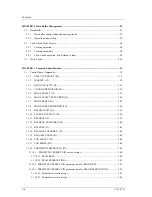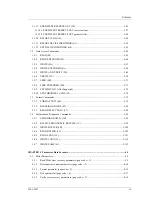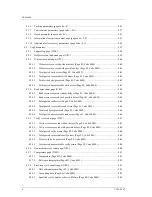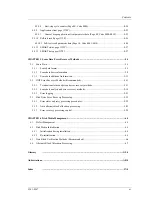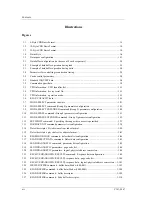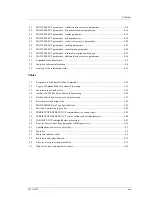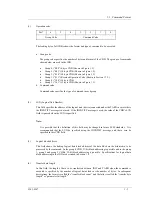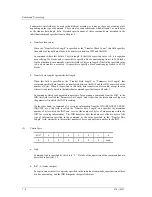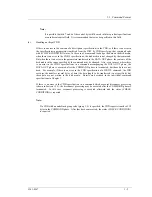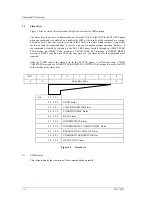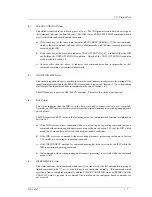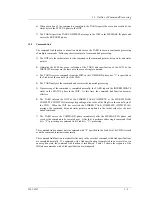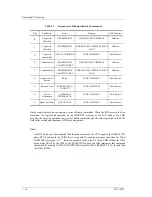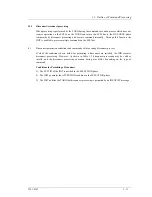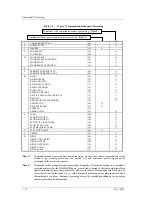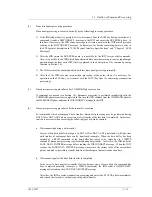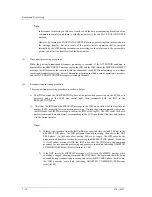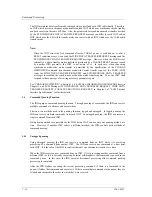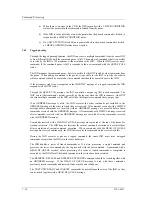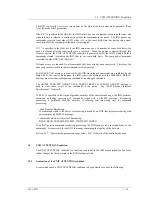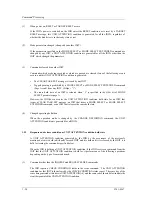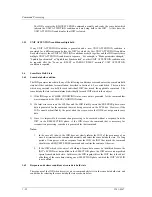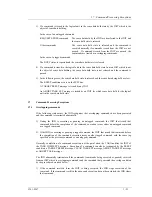
Command Processing
1 - 8
C141-E167
(6)
INTERMEDIATE CONDITION MET Status
This status is reported when it is possible to secure the cache memory area necessary to read all the
logical data blocks specified in a PRE-FETCH command which specifies a link (in the case of
“Immed = 1”), or when reading of all the specified logical data blocks is completed (in the case of
“Immed = 0”).
The IDD does not support the PRE-FETCH command. Therefore, this status is not reported.
(7)
RESERVATION CONFLICT status
This status indicates that the IDD is reserved by another INIT, and that use is impossible until the
reserved status is canceled. Normally, an INIT which receives this status reissues the original
command after waiting an appropriate period of time.
(8)
COMMAND TERMINATED status
This status is reported when the IDD has completed the executing input/output operation when it
received a TERMINATE I/O PROCESS message from the INIT.
(9)
QUEUE FULL status
This status is reported if the IDD cannot register a received tagged command in the command queue
because there is no empty space in the command queue.
1.3
Outline of Command Processing
1.3.1 Single commands
Following shows single command processing examples which are the most basic operations on the
SCSI bus. Furthermore, if disconnect processing is permitted, it may be accompanied by
disconnect/reconnect processing during the command execution, depending on the type of command,
but this operation is omitted in the following explanation. The disconnect function is described in
Section 1.3.3.
1) The INIT sets the initial values for the command in the command pointer, data pointer and status
pointer.
2) The INIT selects the TARG in the SELECTION phase after obtaining the SCSI bus usage in the
ARBITRATION phase. After the SELECTION phase is ended, the SCSI bus control is entrusted
to the TARG.
3) If the ATTENTION condition exists when the TARG responds to the SELECTION phase, the
TARG executes the MESSAGE OUT phase. Normally, the INIT sends the IDENTIFY message
as the initial message and specifies the device (LUN) that is the object of the operation.
4) The TARG executes the COMMAND phase and receives the CDB from the INIT. The TARG
judges the length of the CDB by the group code in the first byte of the CDB and requests transfer
of the necessary number of bytes.
5) The TARG investigates the contents of the command and executes the requested operation. In
the case of commands for which data transfer on the SCSI bus is necessary, the DATA IN or the
DATA OUT phase is executed.
Summary of Contents for MAP3147NC - Enterprise - Hard Drive
Page 4: ...This page is intentionally left blank ...
Page 10: ...This page is intentionally left blank ...
Page 18: ...This page is intentionally left blank ...
Page 62: ...This page is intentionally left blank ...
Page 234: ...This page is intentionally left blank ...
Page 272: ...This page is intentionally left blank ...
Page 274: ...This page is intentionally left blank ...
Page 276: ...This page is intentionally left blank ...
Page 286: ...This page is intentionally left blank ...
Page 288: ...This page is intentionally left blank ...
Page 289: ......
Page 290: ......

